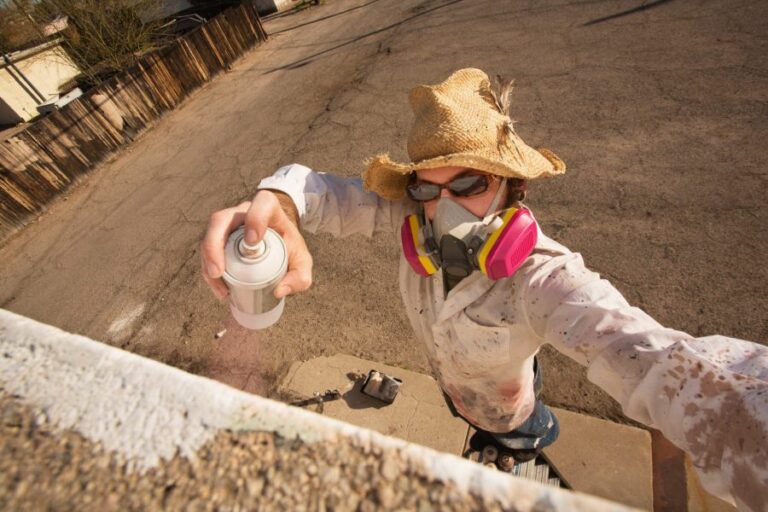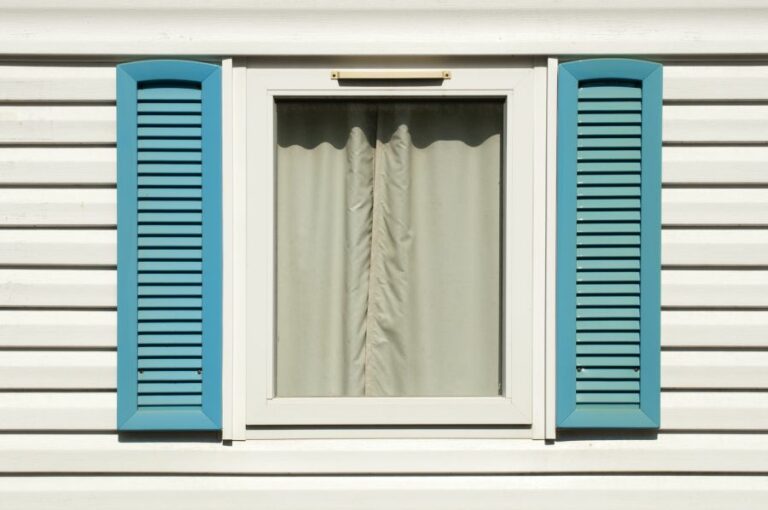Expert Tips for Choosing Paint for Outdoor Cushions
Welcome to the ultimate solution for upgrading your outdoor living space! You’ve landed at the right spot if you plan to revive those faded or outdated outdoor cushions. Let’s dive into the colorful world of paint and explore the best options to transform your old cushions into stylish, weather-resistant accents. We’ll guide you through selecting the most suitable paint type for your cushions without compromising comfort and durability. Everyone deserves a picture-perfect patio getaway, so let’s get those brushes ready and create a stunning outdoor oasis together!
What kind of paint to use on outdoor cushions:
To select the appropriate paint for outdoor cushions, consider water-based acrylic paints for versatility and durability, fabric paints specifically designed for textiles and outdoor use, or spray paints for quick and even application. Ensure the paint is outdoor-rated and suitable for the specific fabric used in the cushions. Apply multiple thin coats and seal with a clear sealer for long-lasting results. Factors like surface material, desired finish, and experience level should drive your choice.

Discover various paint options, application techniques, and helpful tips for transforming your outdoor cushions. Find out how to choose the perfect paint that withstands harsh weather, preserves fabric quality, and brings new life to your outdoor space.
Contents
- 1 Selecting the Appropriate Type of Paint for Outdoor Cushions
- 2 Which Type of Paint is Suitable for Outdoor Fabric?
- 3 What is the process for painting outdoor seat cushions?
- 3.1 • Tools and Materials You Will Need
- 3.2 • Step 1: Choose the Right Paint
- 3.3 • Step 2: Prepare Your Work Area
- 3.4 • Step 3: Clean and Prep Your Seat Cushions
- 3.5 • Step 4: Apply Painter’s Tape
- 3.6 • Step 5: Paint Your Outdoor Seat Cushions
- 3.7 • Step 6: Add Decorative Elements (Optional)
- 3.8 • Step 7: Seal Your Painted Cushions (Optional)
- 3.9 • Step 8: Allow Cushions to Dry Completely
- 3.10 • Final Thoughts
- 4 What is the process for painting outdoor sofa cushions?
- 5 Is it Possible to Utilize Acrylic Paint on Exterior Fabric Materials?
Selecting the Appropriate Type of Paint for Outdoor Cushions
When choosing paint for outdoor cushions, selecting a product that withstands the elements, provides excellent adhesion, and enhances the overall appearance of your outdoor space is essential. We will guide you through selecting the ideal paint for such projects, discussing various options and their unique benefits.
• Water-Based Acrylic Paint: A Versatile Choice
Water-based acrylic paints are among the most popular options for outdoor cushions due to their versatility, durability, ease of use, and minimal odor. Acrylic paints dry fairly quickly and provide excellent adhesion and coverage.
They’re ideal for various surfaces, such as canvas, polyester, and other synthetic fabrics.
– Benefits of Water-Based Acrylic Paints
- Dries quickly: This paint typically takes only a few hours to dry, allowing you to complete your project efficiently.
- Low odor: Acrylic paints have low VOC (Volatile Organic Compound) content, making them environmentally friendly and low-odor options.
- Long-lasting: Acrylic-based paints are known for their durability, and they resist fading, peeling, and cracking.
- User-friendly: The water-soluble nature of acrylic paints makes them easy to clean up with soap and water.
– Tips for Using Water-Based Acrylic Paints
- Always use high-quality, outdoor-rated acrylic paint to ensure durability and long-lasting results.
- If applying the paint on a fabric-covered cushion, ensure the fabric is clean and free of dirt, stains, or oils.
- Consider using a primer or a fabric medium, especially if you’re unsure whether the paint will adhere properly.
- Apply multiple thin coats of paint, allowing each coat to dry thoroughly before adding the next layer.
- Seal your paint job with a clear acrylic sealer to protect your work and improve the longevity of the paint.
• Fabric Paint: Specially Designed for Outdoor Cushions
Fabric paints, also known as textile paints, are specifically formulated for use on fabrics, making them an excellent option for painting outdoor cushions. These paints are available in various finishes, including matte, metallic, and vibrant colors.
– Benefits of Fabric Paints
- Permanent: Fabric paints are designed to be long-lasting and resist fading, even when washed.
- Flexible: The flexibility of fabric paints ensures that they do not crack or peel even on the most challenging surfaces, such as cushions and other textiles.
- Customizable: Fabric paints can be mixed and matched to create custom colors and unique designs.
- Weather-resistant: Many fabric paints are formulated to withstand the rigors of outdoor use, including UV exposure and moisture.
– Tips for Using Fabric Paints
- Always choose a fabric paint labeled for outdoor use to ensure it protects against the elements.
- Wash and dry your fabric before applying the paint to remove any sizing or dirt that may hamper the process.
- For best results, apply the paint using a stencil, sponge, or brush to control the amount of paint and evenly distribute it on the fabric.
- Allow the fabric paint to dry fully before using or exposing the cushion to the outdoors.
• Spray Paint: A Quick and Easy Solution
Outdoor-rated spray paints can also be suitable for painting outdoor cushions, offering easy and fast application. Several spray paint brands offer products designed specifically for fabric use that promise excellent adhesion and durability.
– Benefits of Spray Paints
- Quick application: Cover large areas in a short amount of time with spray paint, making it perfect for sizable projects.
- Uniform coverage: Spray paints offer an even coat of color with minimal effort, ensuring a professional-looking finish.
- Wide range of colors: Choose from various colors and finishes, including metallic, gloss, and matte options.
- Less mess: Avoid paintbrushes or sponges by opting for spray paint, which minimizes clean-up.
– Tips for Using Spray Paints
- Always work in a well-ventilated area to avoid inhaling potentially hazardous fumes.
- Use a drop cloth or old newspaper to protect surrounding surfaces from overspray.
- Apply multiple light coats, allowing each coat to dry before adding another layer.
- Finish with a clear sealing spray to protect your paint job from sun and moisture.
• In Conclusion: Selecting the Best Paint for Outdoor Cushions
Choosing the right paint for your outdoor cushions can significantly impact your space’s longevity and overall appearance. Water-based acrylic, fabric, and spray paints are viable options for such projects. Before making a decision, consider factors such as the surface material, desired finish, and your level of experience.
Following our tips and recommendations, you’ll be well-equipped to tackle your outdoor cushion painting project, ensuring a visually appealing and durable result. Happy painting!
Which Type of Paint is Suitable for Outdoor Fabric?
Painting outdoor fabric can be a fun and creative way to personalize your outdoor space and breathe new life into your furnishings. Choosing the right paint for your project ensures a beautiful and long-lasting result.
We will discuss the best types of paint to use on different types of outdoor fabric and the steps for successful application.
• Acrylic Paint for Outdoor Fabrics
Acrylic paint is a popular choice for outdoor fabric due to its versatility, durability, and variety of colors. Acrylic paint can be used on various materials such as canvas, polyester, and cotton fabrics, making it an ideal choice for many projects.
Moreover, acrylic paint is water-resistant and quick-drying, essential for outdoor fabrics exposed to various weather conditions. Some of the most recommended acrylic paints for outdoor fabric projects are:
1. Fabric Paint
Fabric paint, sometimes called fabric medium or textile medium, is an acrylic paint specifically formulated for use on fabrics. It contains additives that make it more flexible and less likely to crack when applied to the fabric.
As a result, fabric paint is perfect for painting outdoor fabric as it can withstand the natural expansion and contraction of the material caused by temperature fluctuations.
Recommendation: For the best results, I recommend using high-quality fabric paint such as Golden Artist Colors GAC-900 Fabric Medium, Delta Creative Ceramcoat Textile Medium, or Martha Stewart Crafts Fabric Medium.
2. Acrylic Patio Paint
Patio paint is an acrylic paint formulated explicitly for outdoor use, making it an excellent option for painting outdoor fabrics. Patio paint is typically more weather-resistant and has better adhesion to surfaces than regular acrylic paint, ensuring the longevity of your painted fabric.
Patio paint is available in a wide range of colors and finishes, making it easy to find the right paint for your project.
Recommendation: I recommend using patio paint for consistent results when using a trusted brand such as DecoArt Americana Patio Paint or FolkArt Outdoor Paint.
• Spray Paint for Outdoor Fabrics
Spray paint is another suitable option for painting outdoor fabrics, as it is quick and easy to apply and does not require additional tools such as brushes or rollers. Spray paint specifically formulated for outdoor fabric use is recommended to ensure proper adhesion and longevity.
1. Fabric Spray Paint
Fabric spray paint is a type of acrylic paint designed for use on fabrics and has additives to create flexibility to prevent cracking. Fabric spray paint is an easy and efficient way to apply paint to your outdoor fabrics, as it provides an even coating and dries quickly.
Recommendation: For fabric spray paint, I recommend using Rust-Oleum Fabric & Vinyl, Simply Spray Outdoor Fabric Paint, or Tulip ColorShot Instant Fabric Color.
2. Outdoor Spray Paint
Outdoor spray paint is formulated to be weather-resistant and adhere to various surfaces, including fabrics. If you’re painting a large outdoor fabric surface or looking for a specific finish, outdoor spray paint can be an excellent option.
Recommendation: Some reliable outdoor spray paint options include Krylon Outdoor Dcor, Rust-Oleum Universal, and Montana Black.
• Preparing Your Fabric for Paint
Properly preparing your outdoor fabric for painting is crucial to achieving a professional and long-lasting result. Here are some essential steps to follow:
- Clean the fabric: Clean any dirt or debris from the fabric using a mild detergent and water mixture. Rinse thoroughly and allow the fabric to dry completely before painting.
- Test the paint: Always test your paint on a small, inconspicuous area of the fabric before proceeding to ensure compatibility and to fine-tune your application technique.
- Use a primer (if necessary): If you’re using a paint that requires a primer, apply a suitable primer to your fabric before painting to ensure proper adhesion.
- Protect surrounding areas: Use painter’s tape or drop cloths to protect surrounding surfaces from paint splatters or overspray.
• Tips for Painting Outdoor Fabric
Here are some helpful tips to ensure a successful outdoor fabric painting project:
- Apply thin, even coats: Applying thin, even coats of paint will help prevent drips and runs and allow for more vibrant and lasting colors.
- Use a suitable brush, roller, or spray technique: Choose the appropriate tool and technique for your paint type, fabric material, and project size.
- Allow proper drying time: Always follow the manufacturer’s recommended drying times before using or exposing your freshly painted fabric to outdoor elements.
- Seal the fabric (if necessary): If your paint requires a sealer or protective finish, apply it according to the manufacturer’s instructions once the paint is thoroughly dry.
In conclusion, acrylic and spray paint are the most recommended choices for outdoor fabric projects, each with specific formulations to cater to your needs. Always prepare your fabric properly and follow the manufacturer’s instructions for the best results.
You can confidently tackle your outdoor fabric painting project with these expert tips and recommendations.
What is the process for painting outdoor seat cushions?
Transforming your outdoor seat cushions with a fresh coat of paint is a cost-effective way to refresh your outdoor living spaces. We will walk you through painting your outdoor seat cushions step-by-step, ensuring professional results you’ll enjoy for years.
• Tools and Materials You Will Need
Before you begin, gather the following supplies:
- Outdoor fabric paint or fabric spray paint
- Drop cloth or plastic sheeting to protect your work area
- Painter’s tape
- Fine-grit sandpaper (optional)
- Clean cloth
- Foam brushes or small paint rollers
- Stencil (optional)
- Clear sealer for added protection (optional)
• Step 1: Choose the Right Paint
Selecting the proper paint for your outdoor seat cushions is crucial to achieving long-lasting results. Outdoor fabric paint or fabric spray paint is specifically designed for materials exposed to the elements and is resistant to fading, water, and mildew.
There are various brands, including Rust-Oleum, Krylon, and Simply Spray. Ensure that the paint you select is suitable for outdoor use and specifically formulated for the material of your cushions (i.e., polyester, acrylic, or olefin).
• Step 2: Prepare Your Work Area
Choose a well-ventilated area to paint your outdoor seat cushions. Lay down a drop cloth or plastic sheeting to protect the floor or ground from paint. Ensure your work area is free of dirt, dust, and debris to prevent these particles from adhering to the freshly painted cushions.
• Step 3: Clean and Prep Your Seat Cushions
Before painting, clean each cushion thoroughly to remove any dirt or stains. Use a clean cloth dampened with water and mild detergent, gently scrub the surface. Rinse the cushions thoroughly, and allow them to dry completely.
Inspect each cushion for loose threads or fraying fabric, and trim these areas with scissors. Use fine-grit sandpaper to lightly scuff the surface of the cushion, creating better adhesion for the paint. After sanding, wipe the cushions with a clean cloth to remove dust.
• Step 4: Apply Painter’s Tape
If there are areas on the cushion that you don’t want to paint, use painter’s tape to section off these spots. This includes zippers, buttons, or any decorative elements. Press the tape firmly onto the fabric, ensuring a tight seal to prevent paint from seeping underneath.
• Step 5: Paint Your Outdoor Seat Cushions
Using a foam brush or small paint roller, apply the outdoor fabric paint evenly to the cushion’s surface. Follow the manufacturer’s instructions for application, and apply the paint in thin, even coats. Use a small, detailed brush for tight or intricate areas.
If using fabric spray paint, shake the can well and hold it approximately six inches from the cushion. Spray in even, sweeping motions, overlapping each stroke slightly. Use cardboard or another blocking material to shield any areas you don’t want to be painted.
Allow the paint to dry between coats according to the manufacturer’s recommendations. Multiple thin coats will provide better coverage and durability than fewer thick coats. I recommend applying at least two or three coats of paint for the best results.
• Step 6: Add Decorative Elements (Optional)
If you want to add a decorative touch to your painted outdoor seat cushions, consider using a stencil. With the paint still wet, press the stencil onto the cushion and use a small brush or sponge to dab paint onto the stencil’s design. Carefully lift the stencil off the cushion, and allow the paint to dry.
• Step 7: Seal Your Painted Cushions (Optional)
For added protection against the elements, you may choose to apply a clear sealer to your painted cushions. Follow the manufacturer’s instructions for application and drying time. A clear sealer will provide an extra layer of defense against water, UV rays, and abrasion, extending the life of your painted cushions.
• Step 8: Allow Cushions to Dry Completely
Before reattaching your freshly painted cushions to your outdoor furniture, ensure they are completely dry. This will prevent any paint from transferring onto your furniture or clothing. The drying time will vary depending on the brand and type of paint you used, so refer to the manufacturer’s instructions for guidance.
• Final Thoughts
Revamping your outdoor space with painted seat cushions is a simple and cost-effective way to breathe new life into your patio or deck. By following these steps, you’ll achieve professional, long-lasting results that will have your guests admiring your handiwork all season long. Remember to sit back, relax, and enjoy your newly decorated outdoor haven!
| How do you paint outdoor seat cushions? | ||
|---|---|---|
| Step | Method | Description |
| 1 | Clean the cushions | Before painting, clean the cushions thoroughly using soap and water, and allow them to dry completely. |
| 2 | Choose the paint | Select a water-resistant fabric paint or an outdoor spray paint designed for use on fabric. |
| 3 | Prepare the area | Spread a drop cloth or plastic sheet on a flat surface and lay the cushions on top to protect the surrounding area from paint. |
| 4 | Prime the cushions (optional) | If desired, apply a fabric primer or white paint to the cushions to help the color pop and adhere better. |
| 5 | Apply the paint | Using a sponge brush or paint sprayer, apply the fabric paint to the cushions in thin, even coats, allowing each coat to dry before applying the next. |
| 6 | Seal the paint | Once the paint is completely dry, use a fabric sealer or waterproofing spray to protect the paint and make it more durable. |
| 7 | Reassemble and enjoy | Reattach the cushions to your outdoor furniture and enjoy your newly painted outdoor seat cushions! |
What is the process for painting outdoor sofa cushions?
Painting outdoor couch cushions is an excellent way to revitalize your furniture and add color to your outdoor living space. Proper techniques and suitable materials can transform old or faded cushions into stylish, comfortable, and weather-resistant seating.
We will provide step-by-step instructions on painting outdoor couch cushions and helpful tips for achieving professional results.
• Select the Right Paint for Outdoor Couch Cushions
The first step in painting outdoor couch cushions is selecting suitable paint. Many people will turn to fabric or exterior acrylic paint, but outdoor upholstery spray paint is a more durable option. This paint is designed for outdoor furniture and fabric, offering better adhesion, weather resistance, and longevity.
– Brands to Consider
When selecting outdoor upholstery spray paint, there are several reputable brands to choose from, such as:
- Rust-Oleum Outdoor Fabric Paint
- Simply Spray Outdoor Fabric Paint
- Krylon Fusion for Plastic
Each brand offers a unique formula and a wide range of colors. Proper research and comparison of these products will ensure you select the best cushion paint.
• Gather Your Materials and Prep Your Cushions
Once you have your paint, ensure you have all the necessary supplies and tools to complete the project. These items include:
- Drop cloths or tarps (to protect your workspace)
- Sandpaper (to smooth rough surfaces)
- A clean cloth (for wiping away debris)
- Mild detergent (to clean the cushions)
- A scrub brush (to help remove dirt)
- Latex gloves (for personal protection)
- Painters tape (to protect any areas you don’t want to paint)
- A paintbrush or sponge (for applying paint to hard-to-reach areas)
Before you begin, clean and prep your outdoor couch cushions. Vacuum any loose dirt and debris, then wipe the cushions down with a damp cloth dipped in mild detergent. Be sure to allow the fabric to dry completely before painting.
• Set Up Your Workspace and Protect the Surrounding Area
When painting outdoor couch cushions, protecting your surrounding area from overspray is vital. Choose a well-ventilated, preferably outdoor space to work, and lay down drop cloths or tarps to prevent paint from getting on the ground or nearby objects.
Remove any non-fabric parts of the cushions and cover any painted or wood areas with painter’s tape to ensure an even, professional look. This will prevent paint from getting on parts of the cushion you don’t intend to paint, ultimately ensuring a cleaner final result.
• Spray Paint Your Outdoor Couch Cushions
With your workspace set up and the cushions prepped, it’s time to apply the outdoor upholstery spray paint. Shake the can well as directed and test the nozzle on a piece of scrap material before beginning.
Hold the spray can 10-12 inches away from the cushion, and apply the paint using long, even strokes. Avoid holding the can too close or staying in one spot for too long to prevent drips and runs. You may need to apply multiple coats, waiting for the paint to dry between coats, as the manufacturer recommends.
Use your paintbrush or sponge to ensure even coverage for any areas that are difficult to reach with the spray paint, such as seams or folds. Be prepared to touch up with a second or third coat to ensure consistent color and coverage.
• Allow the Paint to Dry and Reassemble Your Outdoor Couch
Once you have painted the cushions, allowing adequate drying and curing time is important, as specified by the paint manufacturer. This can range from a few hours to several days, but it’s essential to ensure that the paint is entirely dry before using the cushions or exposing them to outdoor elements.
Once the paint is dry, remove any painter’s tape and reassemble your outdoor couch with its newly-painted cushions. Your refurbished outdoor couch cushions are now ready for use, providing a comfortable, stylish, and weather-resistant seating option for your outdoor living space.
• Conclusion
In conclusion, painting outdoor couch cushions is a straightforward, effective way to update and revitalize outdoor furniture. By selecting the right paint, prepping your cushions properly, and following the step-by-step process outlined above, you can achieve professional, long-lasting results on your outdoor couch cushions. Happy painting!
Step | Description |
|---|---|
1 | Choose the right fabric paint. Ideally, a paint specifically designed for outdoor or upholstery use. |
2 | Remove the cushions from the outdoor couch and clean them thoroughly using a brush or vacuum cleaner, removing any dirt or debris. |
3 | Prepare the painting area by laying down a drop cloth or plastic sheeting to protect the surrounding area from paint splatter. |
4 | Apply a thin, even base coat of the fabric paint to the cushions using a paintbrush or spray paint, ensuring the entire surface area is covered. |
5 | Allow the base coat of paint to dry completely, usually taking a few hours or overnight, depending on the type of paint and weather conditions. |
6 | Once the base coat is dry, apply a second coat of paint, if necessary, for additional coverage and to achieve the desired color. |
7 | Allow the second coat of paint to dry completely, again waiting a few hours or overnight. |
8 | Once dry, reattach the painted cushions to your outdoor couch and enjoy your refreshed outdoor seating area. |
Is it Possible to Utilize Acrylic Paint on Exterior Fabric Materials?
Acrylic paint is an incredibly versatile medium known for its durability and ability to adhere to various surfaces. We will discuss whether or not acrylic paint can be successfully used on outdoor fabrics, as well as its application method, durability, and suggested products.
• Is Acrylic Paint Suitable for Outdoor Fabric?
The simple answer to this question is yes; acrylic paint can be used on outdoor fabric. However, for the paint to adhere properly, last longer, and withstand various weather conditions, following a few guidelines is essential during the application process.
– Proper Preparation is Key
Before painting outdoor fabric with acrylic paint, it’s necessary to prepare the fabric’s surface properly. Clean the fabric to ensure it’s free of dust, dirt, and other contaminants that could prevent the paint from adhering well.
Use mild soap and water to wash the fabric for best results, then allow it to dry thoroughly before painting.
– Use Fabric Medium
While acrylic paint can be used directly on the outdoor fabric, mixing it with a fabric medium is essential. Fabric mediums are additives specifically designed to improve acrylic paint performance on fabrics.
By using a fabric medium, you’ll achieve several benefits:
- Improved flexibility: Acrylic paint can sometimes become stiff when applied to the fabric. A fabric medium will prevent this by increasing the paint’s flexibility, keeping it from cracking or peeling over time.
- Enhanced color retention: Outdoor fabric is constantly exposed to sunlight and other weather elements, which can fade the paint over time. Fabric medium helps to maintain the vibrancy of the paint, ensuring it stays looking fresh and crisp.
- Better washability: Fabrics painted with acrylics may not be as easy to clean. A fabric medium makes the paint more washable, allowing you to wash the painted fabric without worrying about ruining the design.
– Apply Multiple Thin Coats of Paint
When painting outdoor fabric, applying multiple thin coats of paint instead of one thick coat is important. This approach will provide better coverage, help the paint adhere better to the fabric, and ensure the paint is more resistant to fading and wear.
Allow each coat to dry completely before applying the next one. Depending on the paint and fabric medium you’re using, drying times may vary, so follow the product guidelines for optimal results.
• Recommended Products
Here are some recommended products that can help you successfully use acrylic paint on outdoor fabric:
- Acrylic paint: One popular option is Liquitex Basics Acrylics. These paints are known for their good quality and consistency, making them suitable for outdoor fabric applications.
- Fabric medium: Liquitex Fabric Medium is a popular choice for mixing with acrylic paint to enhance its performance on fabric. It offers good adhesion, flexibility, and improved washability.
- Sealer: To protect your painted outdoor fabric, consider applying a clear sealer after the paint has dried. One recommended option is Krylon UV-Resistant Clear Acrylic Coating, which provides additional protection against fading and yellowing caused by exposure to sunlight.
• Final Thoughts
In conclusion, acrylic paint can be used on outdoor fabric, provided proper preparation, the use of fabric medium, and the application of thin coats of paint are observed. These practices will ensure your painted fabric is flexible, durable, and withstand various weather conditions.
Invest in quality acrylic paints, fabric mediums, and sealers for the best results. By following these guidelines, you can successfully create eye-catching and long-lasting designs on your outdoor fabrics







